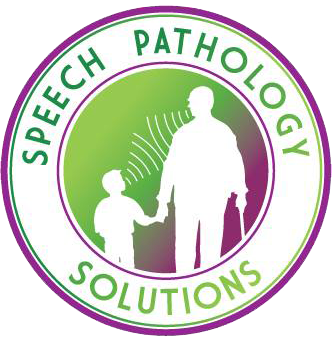Technology has become instrumental in helping speech therapists overcome numerous communication challenges. Augmentative and Alternative Communication (AAC) devices stand out as a significant innovation, offering a voice to those who struggle with speech and language impairments. This transformative impact of AAC devices can not be understated, though many might not know how they enhance communication for individuals facing these challenges.
Understanding AAC Devices
These devices encompass a broad spectrum, from basic picture boards that facilitate simple requests and expressions to advanced electronic devices capable of generating complex speech outputs. The diversity in AAC solutions reflects the broad spectrum of communication needs, emphasizing personalization and inclusivity. Each device is chosen to match the user’s cognitive abilities, physical skills, and social requirements. This encourages communication and builds confidence for all users.
The Role of AAC Devices in Speech Therapy
Speech-language pathologists use these devices to aid in therapy sessions that cater to the unique linguistic and cognitive levels of each client. This approach allows for a more engaging and effective therapy experience, encouraging active participation and facilitating significant progress in language development. The strategic integration of AAC technology in speech therapy underscores a commitment to holistic and patient-centered care.
Technological Advancements in AAC Devices
AAC devices have experienced rapid evolution, continually expanding the horizons of what’s possible for individuals with communication challenges. Recent advancements have ushered in an era of devices that are more intuitive and user-friendly, and capable of mimicking natural speech patterns and facilitating real-time communication. Innovations such as touchscreen interfaces, customizable speech output, and eye-tracking technology have significantly enhanced the accessibility and effectiveness of these devices. The advent and integration of AI and machine learning algorithms have led to smarter, context-aware systems that can predict user intent and streamline communication processes. The ongoing advancements signal a future where limitations to communication become increasingly surmountable, enabling individuals to express themselves more freely and confidently.
Choosing the Right AAC Device
Each AAC device type offers unique advantages to meet the communication needs of individuals with speech and language impairments. The selection process requires careful consideration of these features to ensure the chosen device effectively supports the user’s ability to communicate and interact with their world.
Picture Boards
A simple form of AAC that uses visuals to represent words, phrases, or actions, enabling users to communicate basic needs and ideas. They are highly portable, do not require power, and are cost-effective, making them accessible to many users. However, their simplicity also means they offer limited expressive capabilities, which may not be sufficient for individuals with more complex communication needs. The static nature of picture boards means they can quickly become outdated as the user’s communication skills and needs evolve.
Communication Books
This AAC device compiles letters, words, or symbols in a physical book format, allowing users to point to or gaze at their choice to communicate. These books are customizable and can be expanded to include a broad vocabulary, catering to the user’s communication style. Like picture boards, they are portable and do not rely on power, but flipping through pages can be cumbersome and slow, potentially hindering conversation. Additionally, users might outgrow the content, necessitating regular updates to the book to match their developing language skills.

Speech-Generating Devices (SGDs)
SGDs offer dynamic communication solutions by producing spoken words or phrases when the user selects symbols, letters, or words. They range from basic models that speak pre-recorded messages to advanced devices capable of synthesizing speech with customizable vocabularies. They can adapt to the user’s changing needs, with some models featuring internet connectivity and environmental controls. The primary drawbacks are their higher cost compared to non-electronic options, dependence on power sources, and the potential need for ongoing technical support.
Tablet-Based
AAC apps turn common tablets or smartphones into versatile AAC tools, with apps that convert text or symbols into spoken language. These apps are generally more affordable than dedicated SGDs and offer the advantage of being highly portable and multifunctional. Users can enjoy a wide range of applications on a single device, from communication support to educational and entertainment apps. The main challenges include the durability of consumer-grade devices in demanding environments and the possibility of users becoming distracted by the non-communication functions of the device.
Dedicated AAC Devices
These devices are engineered specifically for augmentative communication, providing durable, high-quality options for individuals with varied communication needs. They often include specialized access methods, such as eye-tracking or switch access, making them suitable for users with physical limitations. While dedicated AAC devices are highly effective and customizable, their high cost and sole focus on communication functions may limit their appeal compared to more versatile, consumer-grade technology.
Implementing AAC Devices in Everyday Life
Incorporating AAC devices into daily life can be a transformative experience for users and their families. Practical tips, such as setting up routine practice times and involving the device in everyday activities, can make a significant difference in the user’s proficiency and comfort with the device. Support and training for both the users and their families are paramount to achieving the best outcomes.

Unlock Your Voice – Partner with Speech Pathology Solutions
In the journey towards effective communication, finding the right tools and support is key. At Speech Pathology Solutions, we understand the unique challenges and opportunities that come with selecting and using AAC devices. Our dedicated team of expert speech-language pathologists is committed to providing personalized, compassionate, and evidence-based care to empower individuals with communication challenges. With a focus on innovative solutions and client-centered approaches, we strive to unlock the full potential of every voice.
Choosing Speech Pathology Solutions means partnering with a team that values collaboration, innovation, and excellence. We offer comprehensive assessments, customized therapy plans, and ongoing support to ensure that individuals and their families not only find the perfect AAC device but also thrive using it. Our mission is to enhance communication abilities, boost confidence, and improve the quality of life for those we serve. Contact Speech Pathology Solutions today and take the first step towards enhanced communication through technology.
Frequently Asked Questions
What are AAC devices?
Augmentative and Alternative Communication (AAC) devices are tools designed to aid individuals who experience challenges with verbal speech. They range from simple picture boards that facilitate basic communication to sophisticated electronic devices capable of generating complex speech outputs. These devices aim to enhance the user’s ability to communicate effectively and independently.
Who can benefit from using AAC devices?
AAC devices are beneficial for individuals of all ages who have speech and language impairments. This includes those with congenital conditions such as cerebral palsy or autism, as well as acquired conditions like traumatic brain injury or stroke. Speech-language pathologists can assess individual needs to recommend the most appropriate AAC solutions.
How do I choose the right AAC device?
Choosing the right AAC device involves considering the user’s specific communication needs, preferences, and abilities. Factors such as ease of use, portability, customization options, and the environment in which the device will be used are important. Consultation with a speech-language pathologist is crucial for assessing needs and exploring the most suitable options.
What role do speech-language pathologists play in using AAC devices?
Speech-language pathologists are integral in the selection, customization, and implementation of AAC devices. They assess the individual’s communication needs, recommend appropriate AAC solutions, and provide training to the user and their support system. They also play a key role in integrating AAC devices into therapeutic and daily communication activities to enhance language development and social interaction.
How have technological advancements impacted AAC devices?
Technological advancements have significantly improved the functionality, accessibility, and user-friendliness of AAC devices. Innovations such as touchscreen interfaces, customizable speech output, and eye-tracking technology have made AAC devices more adaptable to the needs of users. Additionally, advancements in software and AI have led to smarter, more intuitive systems that support a wider range of communication needs.

